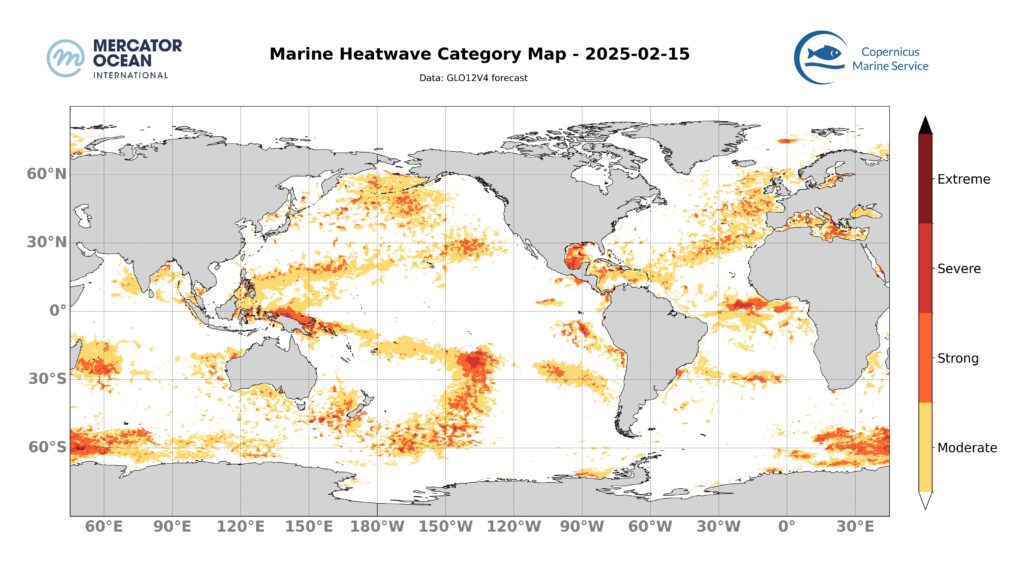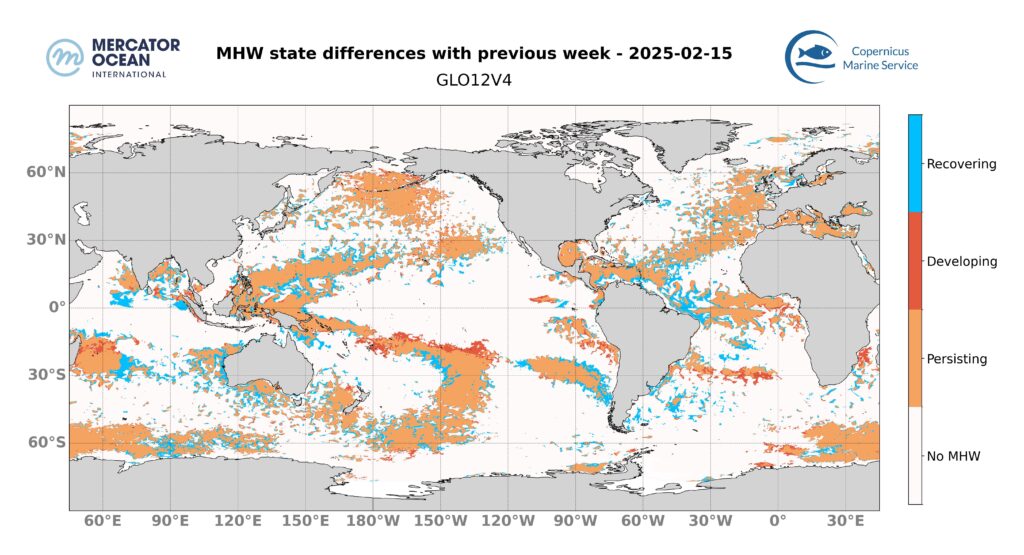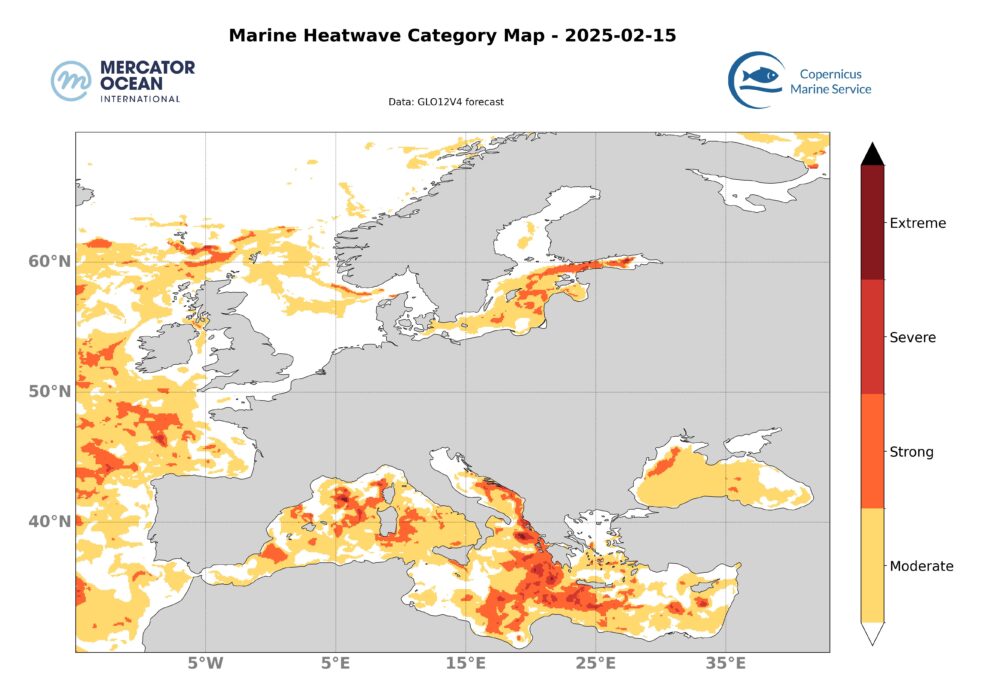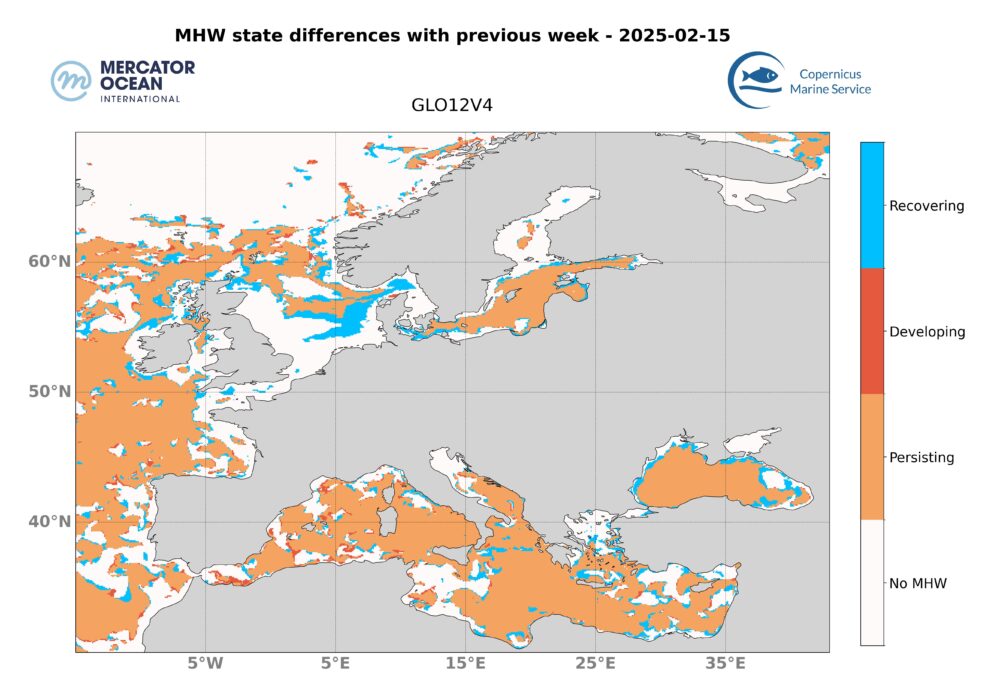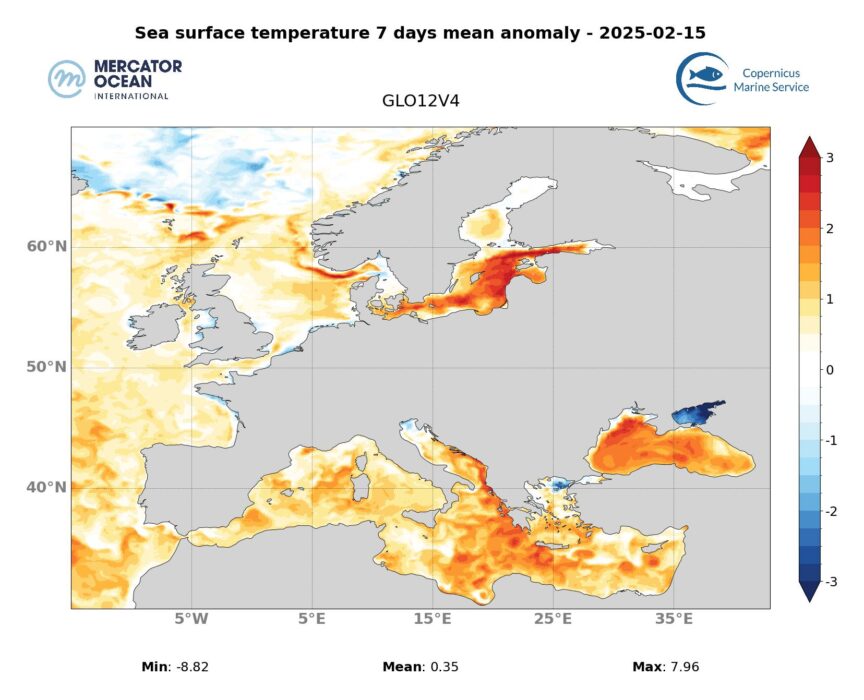The marine heatwave bulletin provides forecasts and analysis of marine heatwave events across the globe and throughout the year. Used datasets include observations (satellite sea surface temperature maps) and numerical model analyses (assimilating satellite and in situ observations) to derive marine heatwave forecasts for a 10-day period. [1] This week’s forecasts were produced using as a comparison the marine heatwave situation on 04/02/2025.
Forecasts for 15 February
Indian Ocean
The marine heatwave to the east of Madagascar will decrease in intensity and extent, but remain with moderate and strong categories. The marine heatwave to the west of Australia is decreasing in intensity and has been upgraded to moderate overall.
Tropical Pacific Ocean
The marine heatwave to the west of the basin, between 0°N and 30°N, is decreasing in intensity and has been downgraded to moderate overall. The marine heatwave to the south of Papua New Guinea is decreasing in intensity and surface area, until it virtually disappears. The heatwave to the north of Papua New Guinea remains stable.
South Pacific Ocean
Off New Zealand at 150°W, the position of the marine heatwave changes and is now in the center of the basin, but its intensity and surface area remain stable overall. The marine heatwave off the Chilean coast is decreasing in intensity, and is now mostly in the moderate category.
Tropical Atlantic Ocean
The marine heatwave in the Caribbean Sea is decreasing in intensity, and is now mostly in the moderate category. In the Gulf of Mexico, the marine heatwave is intensifying, and is now mostly in the strong category, with severe categories in places. The marine heatwave in the Gulf of Guinea is intensifying, with the appearance of strong categories.
Southern Ocean
The marine heatwave between 0° and 60°E intensifies as the surface area of the strong categories increases. Between 90°E and 120°E, the heatwave diminishes in intensity and falls into the moderate category.
European Zone
Weekly Temperature Anomalies
09/02 – 15/02/2025
| Indian Ocean | -0.5°C to 2.5°C |
| Tropical Atlantic Ocean | 0°C to 3°C |
| Tropical Pacific Ocean | -3°C to 2.5°C |
| South Pacific Ocean | -3°C to 3°C |
| Southern Ocean | -0.5°C à 1.5°C |
Access the Daily Global Physical Bulletin for a 9-day forecast here.
SURVEY
Help us improve our content! Answer a quick survey about this bulletin here.
What are marine heatwaves?
Marine heatwaves (MHW) are extreme rises in ocean temperature for an extended period of time. They can occur at different locations in the ocean, and their magnitude and frequency have increased over the last couple of decades, with harmful impacts on ecosystems, and human activities. According to the latest report released by the Intergovernmental Panel on Climate Change (IPCC AR6 SYR), it is found with high confidence that in the near-term at 1.5°C global warming, the increasing frequency of marine heatwaves will increase risks of biodiversity loss in the oceans, including from mass mortality events.[2]
How are marine heatwaves calculated?
A marine heatwave is an episode during which the ocean temperature is abnormally warm for at least 5 consecutive days.
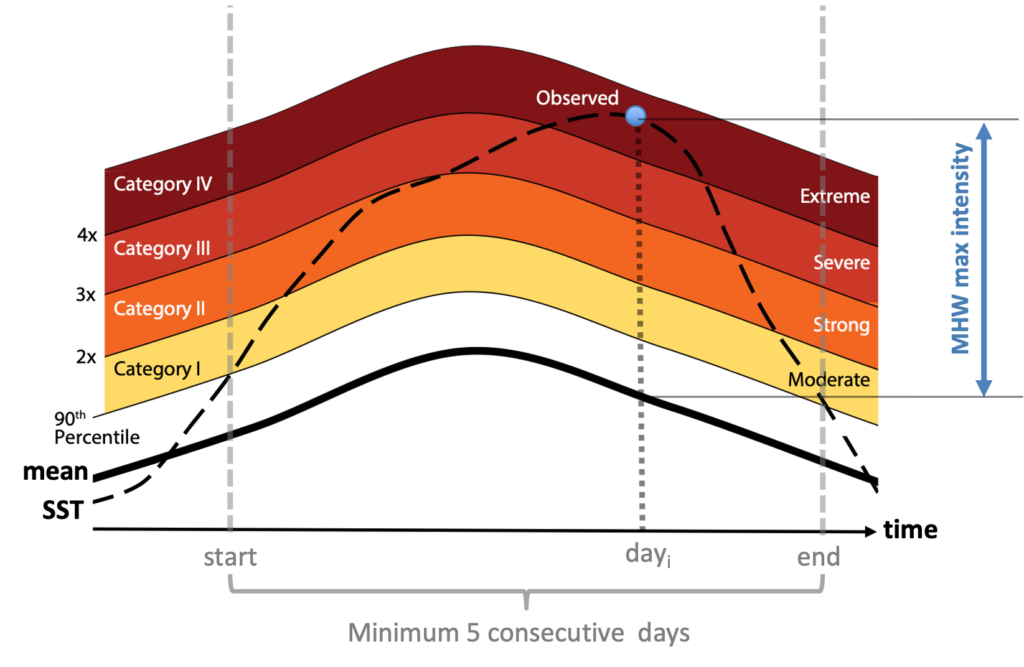
Adapted from Hobday et al. (2018)
For any location in the ocean, the normal temperatures are defined for every day of the year using a climatological period (here 1993–2016). A heatwave is identified when the measured daily temperature is within the top 10% of the highest recorded values for that day (i.e., above the 90th percentile, see diagram), and with this condition persisting for at least five consecutive days.
The intensity of the heatwave on any given day is measured as the number of degrees above the climatological average (represented by the bold black line) indicated by the blue arrow. We can either calculate the cumulative intensity over the entire heatwave or record the maximum intensity.
Heatwaves are classified based on their intensity level. To do this, the intensity is compared to the difference between the climatological value and the 90th percentile value. A mhw intensity between 1 and 2 times this difference corresponds to a heatwave of moderate category; between 2 and 3 times, to a strong category; between 3 and 4 times, to a severe category; and a difference greater than 4 times corresponds to an extreme category.
[1] Analysis of datasets: SST OSTIA (Copernicus Marine Service), OISST (NOAA), GLO12 (Copernicus Marine Service / Mercator Ocean International), PSY4 (Copernicus Marine Service / Mercator Ocean International), and GLO12 et PSY4 forecasts.
[2] IPCC AR6 SYR chapter 4.3 https://www.ipcc.ch/report/ar6/syr/downloads/report/IPCC_AR6_SYR_LongerReport.pdf

